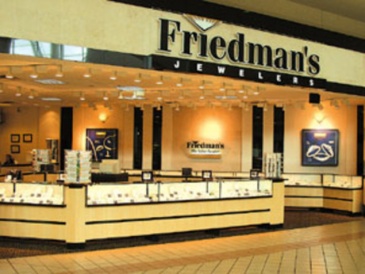Even with huge progressions in diamond technology, a lot of jewellers still say that a prospective diamond buyer must view a diamond prior to purchase. Of course, not trading online means that they are completely biased, but is it a really valid assertion?
In my opinion, it is not – for 99% of cases. Those still pushing this opinion are usually trying to scare diamond buyers away from the internet.
To make my point, let’s start with an average engagement ring shopper in an average jewellery store. In this case, the roof is covered with spotlights.

There are a number of things wrong with this situation:
- The lighting is so bright that anything looks great. The light can also hide the inclusions and the real colour of the diamond. We have these hideous lights in our showroom. We recently changed to lower intensity LEDs, but I still don’t like them. However, it seems standard in jewellery industry.
- It is usually a high pressure sales environment. Despite what environment jewellers may provide, they are still there to do one thing – sell to you.
- Most diamond buyers can not use a loupe properly. Usually the inexperienced hold the diamond about 30cm from their eyes and move the loupe up and down to try and focus it. Luckily, we provide microscopic photos and have a trinocular microscope at hand to help those inexperienced in using a loupe.
- Sometimes people think they see an inclusion, when it is really dust or head obstruction (the contrast in a diamond). This sticks in their mind and they unwittingly reject a superior diamond.
- The environment and peoples’ clothes can reflect onto the diamond, making it appear more yellow or a different colour. Of course, most people are not interested in viewing diamonds in a proper environment for colour grading as they want to see the diamond face up. Furthermore, a lot of diamonds are set into rings, so accurate colour determination is not possible.
- People mistake the fire of a diamond for fluorescence.
- Even in a reasonable environment (eg diffused office lights), the cut, especially the contrast and leakage in round brilliants is difficult to gauge, especially for amateurs.
The way to fix this problem can be broken down into three parts:
- Proper certification – GIA or AGS are the most accurate.
- Proper analysis by the vendor – Certificates are not the be all and end all of diamond buying. Furthermore, they may be wrong. Proper analysis includes using reflectors (Ideal-Scope, ASET), Sarin machines and taking microscopic photographs and colour checking. The more analysis, the better, as different technologies tell different stories about the diamond.
- Trust – Convey an image of trust to diamond buyers by using only the best certification, showing your analysis and having consistent and fair pricing.
As a diamond buyer, once you have chosen a vendor and a diamond, some good questions to ask the vendor would be:
- Is the diamond eye-clean? Now there are varying definitions of eye-clean, so it can be tough when communicating remotely, but there should be a good return policy when buying online.
- Does the colour of the diamond noticeably affect the face-up appearance of the diamond? What shade is the colour – yellow, brown, grey or another colour?
- Does the presence, or lack of fluorescence have a positive or negative effect on that particular diamond?
- Is any painting and/or digging visible?
Whilst I am not suggesting that diamonds should be bought like commodities such as gold or oil, the fact is that technology has progressed so much, that tools such as Sarin machines, the Ideal-Scope and ASET, as well as digital photographic technology make it easy to select a high-quality diamond without the need for eyeballing it.
…And the 1% of cases where viewing a diamond prior to purchasing is necessary usually involves SI clarity stones, where the stone is borderline eye-clean – that is, some people can see the inclusions with their naked eyes and some people can not.